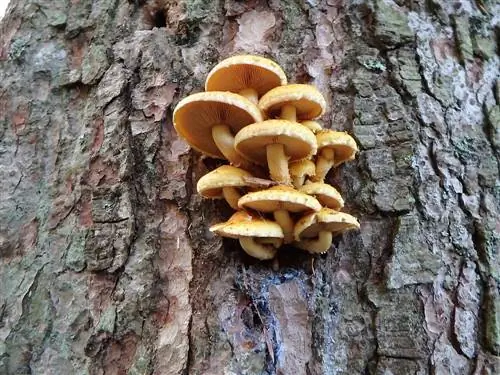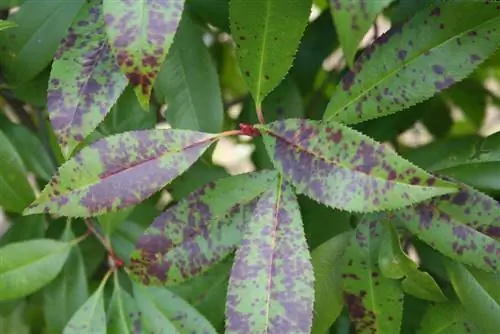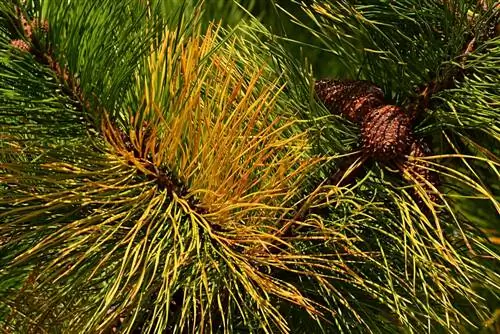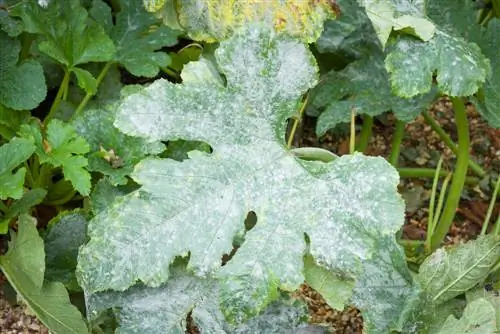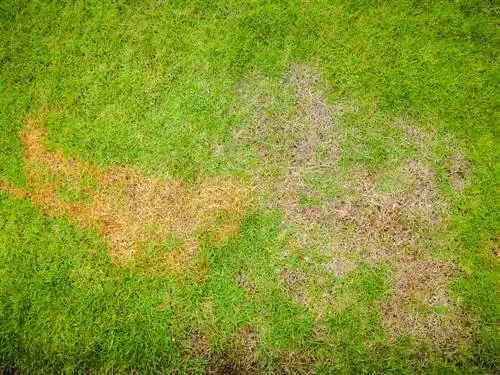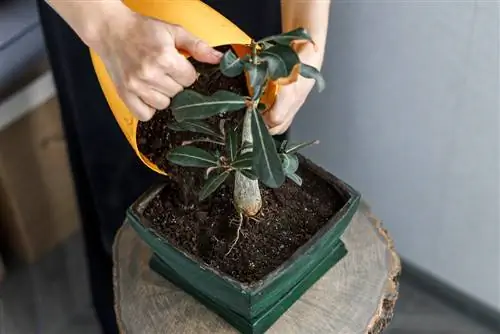- Author admin [email protected].
- Public 2023-12-16 16:46.
- Last modified 2025-01-23 11:22.
From a forest protection perspective, spruce is the most critical tree species in Central Europe. It can be attacked by various fungi and thus permanently destroyed. You can find out in this article how fungal infestation manifests itself in spruce and which fungal diseases occur in it.
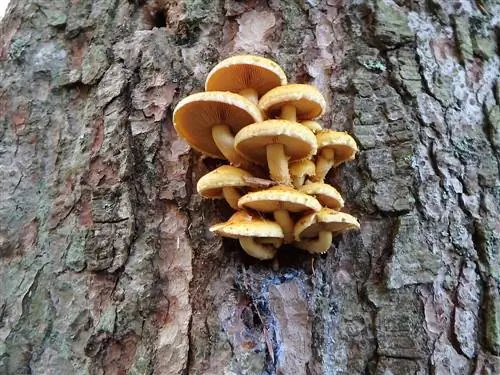
What signs indicate fungal infection in spruce trees and what can you do about it?
Fungal infestation in spruce trees is manifested by honey fungus infections, red rot and Sirococcus shoot death. Signs include root damage, resin flow, bent shoot tips and loss of needles. As a countermeasure, the affected tree should be felled early and affected roots treated to protect neighboring spruce trees.
Which fungal diseases can occur in spruce?
Fungal infestation of spruce trees is observed much less frequently than damage caused by insects; Nevertheless, there areseveral fungal pathogens and diseases that can occur in the conifer and are worth mentioning:
- Honeycomb infection (due to different species of honeycomb)
- Red rot (especially caused by root fungus and bleeding layer fungus)
- Sirococcus shoot death (caused by Sirococcus conigenus)
How does a honey fungus infection manifest itself?
The species of the honey fungus genus feed primarily saprophytically on dead parts of wood in the soil. However, they can also switch to a parasitic lifestyle if the potential host plant is previously damaged. AsRoot and stem rot pathogens, honey fungi can cause the death of standing spruce trees.
Distinguishing features:
- dark brown to black mycelium strands (rhizomorphs) mixed with the finer roots of the spruce tree, with a rather rounded cross section
- Whitish flat, fan-like branching network under the dead bark above the base of the trunk (can also become black and crust-shaped after the tree dies)
- Resin flow in the lower trunk area
How do you recognize red rot?
Various types of fungi can cause red rot in spruce trees. The most important pathogen isRoot Sponge(Heterobasidion annosum). It causesroot rot, which leads to increasing white rot in the heartwood and endangers felled spruce trees, especially in early autumn.
In addition to root-shaped stem rots,Wound Rotsshould also be mentioned. These penetrate the trunk through damage to the bark. The typical cause of such a fungal attack on spruce is theBleeding layer fungus (Stereum sanguinolentum).
What characterizes Sirococcus shoot death?
TheSirococcus conigenusis responsible for the Sirococcus shoot death in spruce trees. This fungustypically attacks the youngest shoots If the latter bend and lose their needles, you can assume a fungal infection. A tuft of browned spruce needles often remains attached to the tips of the shoots as a “flag”; these needles were not yet fully developed at the time of infection.
If the infestation lasts for several years, thecrown becomes increasingly sparse. It lightens from the outside in. A chronic infestation leads to the death of the affected spruce.
What can you do against fungal infestation on spruce trees?
Unfortunately, once a fungal infection has occurred, there is not much that can be done about it. The tree shouldbe felled early, as the fungal disease causes it to increasingly lose stability and become more susceptible to wind.
Important: To protect neighboring spruce trees from infestation, the root trunk of a felled tree should be treated with an agent that renders the fungus harmless. The goal is toprevent fungal infestation This works best if the spruce tree has everything it needs for he althy growth and life in its location.
Tip
Rust fungus: unsightly, but not threatening
Unlike the fungal diseases described above, rust fungi are not a serious threat to spruce. Although they can infect the conifer, they “only” make it look somewhat unsightly, as they turn the needles yellowish and mar them with whitish spores.

